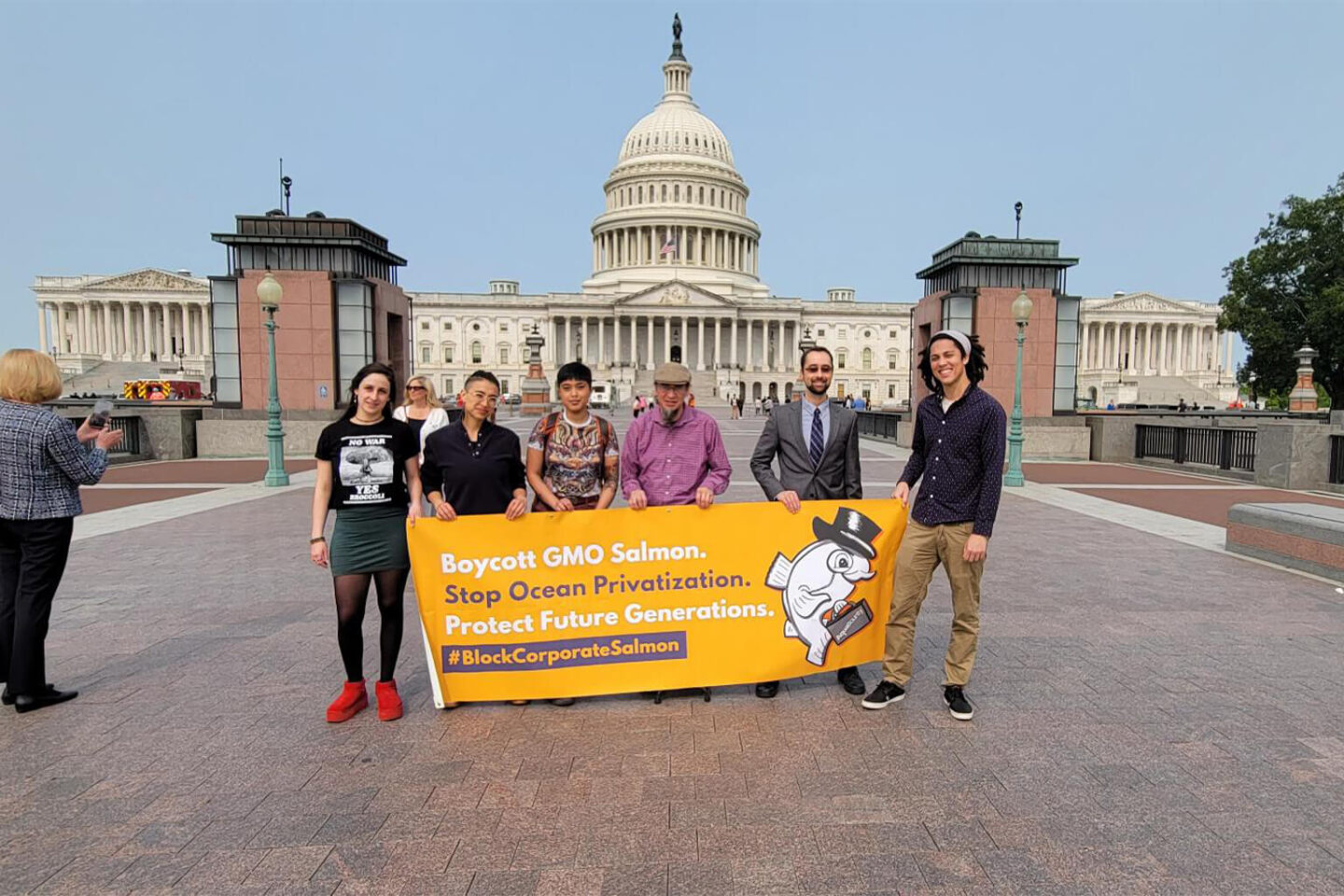Perhaps the most notorious industrial farming institution is the concentrated animal feeding operation, or CAFO, in which livestock are raised in crowded conditions that require the heavy use of antibiotics to treat the infections that inevitably arise from such packed and stressful living. In recent decades, as a growing proportion of the world’s seafood has come from aquaculture, corporate actors have begun to take the same industrial food production tactics to the world’s waters, according to environmental and Indigenous rights activists.
While some aquaculture has social and environmental benefits, farming carnivorous finfish on an industrial scale has numerous negative impacts: chemical and nutrient pollution, overfishing of forage fish to feed penned fish, threats to Indigenous and small-scale fisher livelihoods, and the increased spread of infections causing harm to wild fish.
….
George Kimbrell, legal director at the Center for Food Safety (CFS) and the co-author of a new law review article on the “coming battle for the ocean,” told Mongabay that U.S. policymakers should learn from what’s happened on land — corporate control and dense concentrations of a single crop — and avoid adopting the same model at sea. There are still small- and medium-scale fishing communities across the country that rely on access to healthy marine ecosystems, he said.
“All that’s gone if you have industrial aquaculture replace it,” he said. “All you have to do is drive across Iowa[’s fields] and you see what it’s replaced with.”
…..
The SATS statement also cited aquaculture’s role in feeding a growing U.S. population. Most seafood consumed in the U.S. comes from abroad, and aquaculture sites in federal waters could provide more homegrown seafood, reducing the trade deficit, they say.
However, opponents say there’s already plenty of catch in the U.S. without offshore aquaculture, but much of it is exported for sale to foreign consumers or for processing overseas. In 2020, the U.S. industrial seafood catch was about 8.4 billion pounds (3.8 million metric tons), while national consumption was about 6.3 billion pounds (2.9 million metric tons), according to NOAA’s “Fisheries of the United States” report.
…..
Off Newburyport, Massachusetts, a large, 40-pen proposed trout and salmon project has also caused concern. Brett Tolley, who comes from a long line of fishers on Cape Cod and is a national coordinator at North American Marine Alliance, a fisher-led advocacy group, opposes the project and said the federal government is taking the wrong approach.
“It doesn’t make any sense to prioritize investing money into industrial aquaculture,” he told Mongabay. “It makes a lot more sense to rebuild local and regional seafood supply chains, and if we could do that then families like mine could be around for the long haul.”
Carl Wassilie, a Yupik biologist who lives in Washington state where commercial finfish farming is banned, said such state restrictions are key not just for the environment but also for the cultural vitality of Indigenous fishers.
“[There’s a] spiritual importance of being able to get that salmon, do a ceremony or to share with their elders, especially for a young fisherfolk, the importance of honoring our salmon and all the relations that the salmon have with the bear, the eagle, even the berries,” he told Mongabay, referring to the interconnectedness of the natural world for Indigenous peoples of the Pacific Northwest.
Wassilie said the struggle against industrial aquaculture in the U.S. is part of a larger Indigenous resistance, this time against the attempted privatization of the oceans for use by corporations and the risk of cascading effects if the industry scales up. So far, the proposed projects in federal waters are not near Indigenous fishing waters.

